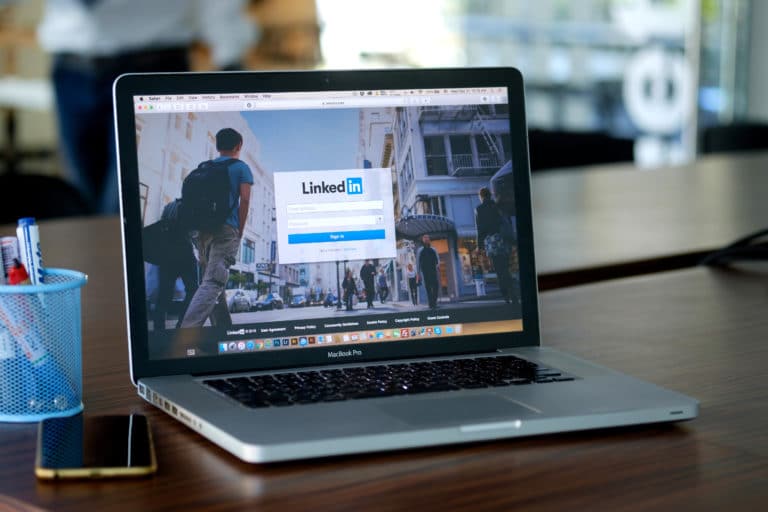What does a good LinkedIn selling strategy actually look like?
Social selling on LinkedIn is a hot topic these days. You probably hear the buzzword “social selling” all over the place, usually followed by vague recommendations on how to do it. In this article, I’m going to show you what LinkedIn selling really looks like and the exact steps you need to take to be successful at it.
Aside from a LinkedIn Sales Navigator subscription (highly recommended), every tool or strategy I’m going to mention is free.
You just have to do the work.
Additionally, just in case you’re wondering what I’m basing this advice off of — I’m outlining the strategies we’ve used to grow RevenueZen, along with the strategies we’ve been using to help other companies grow. In the last year and a half, over 40% of our new business has been sourced from or been verifiably influenced by LinkedIn (mostly sourced directly through LinkedIn).
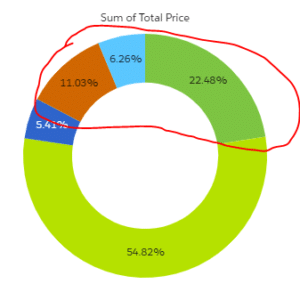
Is LinkedIn Selling Right for Your Company?
This first question — is LinkedIn even a worthwhile sales channel for you?
At RevenueZen, we help B2B companies generate leads through a variety of sales and marketing channels.
Our litmus test for LinkedIn as a sales channel is this: Is your target market on LinkedIn?
That’s about it.
If decision-makers in your target market are active on LinkedIn, you need a LinkedIn strategy.
Period.
Do a quick LinkedIn Sales Navigator search and see how many people you can find that match your target persona.
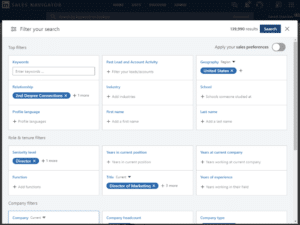
That’s your audience. Those are the people you need to connect with and engage.
Publish Content to Your LinkedIn Feed
Publish valuable, insightful, personal content with professional relevance.
If people are going to buy from you, they need to trust you.
Do you have insights into your industry? Unique stories about your career path? How did you get to where you are today? What mistakes have you made that other people can learn from?
Publish this content to your LinkedIn feed. You get 1,300 characters to tell your story, so take advantage of it; just don’t make it an advertisement for your product, service, or blog.
You’re not trying to get clicks from LinkedIn. You’re trying to engage real human beings in your network.
Instead of being promotional, treat yourself as if you are the brand and publish professionally relevant personal content. You can be personal and authentic while still relating content that your network will find professionally relevant.
Show your network that when they engage with you, they are engaging with a real person, not a faceless company.
Check out the intro to this post by our CEO, Alex Boyd:
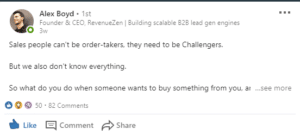
When this pops up on your feed if you’re in the B2B sales world, it is automatically relevant to you. It’s also personable. It doesn’t feel like you’re about to read an ad. You aren’t. Alex doesn’t mention RevenueZen, or anything about what we do in his post.
This is us practicing what we preach: If people are interested in what you have to say, they’ll check you out. You don’t need to force it. If you need proof, check out these Linkedin posts that generated leads for our team.
Engage With Other LinkedIn Content
Even when you aren’t publishing, you should be following and commenting on people’s posts within your network. Engage the people in your market who are active on LinkedIn. Not only will it make it more likely that they engage with your content, it also puts your profile in front of their audience (assuming you say something that has value).
And I don’t just mean blindly spamming “Nice post” on a hundred different posts. No; leave actual comments that add to the conversation and that you would stand by if you spoke with that person in real life. Eventually, if you’re engaging with your network consistently, you will actually connect personally with the people you interact with.
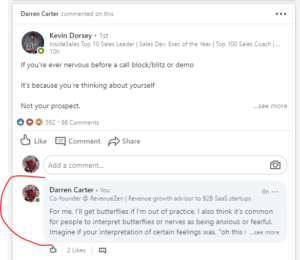
Comments are also a way to get visibility with your network. Each time you leave a comment, it does a couple things:
- it shares your comment across your network, and
- it shares the post you’re commenting on across your network (building goodwill with the writer of the post).
This also means you shouldn’t be engaging with content that isn’t relevant to your network in some way. Every time you click like on a post, it shares that post with your network. If people in your network are seeing too much useless content, they will stop following you. Your goal should be to engage with content that has a chance to add value to your network.
Oh, and if people are leaving comments on your post, respond to them. Engage them. Don’t treat your social engagement as if you’re trying to hack LinkedIn. You’re not. Treat LinkedIn as a valuable channel where you can engage people who are in or are influential in your market (because that’s exactly what it is).
Let Your Profile Do the Selling
How do you social sell on LinkedIn without being pushy?
This is a point of confusion I run into all the time. I think it comes from the phrase “social selling.” People aren’t sure whether to sell, or just be social. So they end up doing neither.
The key is to let your profile highlight the value proposition for your company. Use your profile and headline to state who you help, what you do, and how you do it. If you’re engaging your network in a way that gives value, people will be curious about who you are and what you do.
If your headline says “I help VPs of HR …” guess who’s going to see that headline and be curious? That’s right. VPs of HR. Doubly so if they’ve interacted with you positively via content that’s relevant to VPs of HR.
Social Selling Means Starting Real Conversations
Now it’s time for the real LinkedIn social selling. As you’re publishing content, you should be connecting with relevant people in your market. Use LinkedIn Sales Navigator to find and connect with people.
As you’re searching for people (through LinkedIn Sales Navigator, your content feed, your 1st degree connections), always focus on starting real conversations. When you send connection requests, send personalized ones. Keep those personalized messages short and simple, focusing on why it’s relevant for you two to connect.
As you’re searching for people (through LISN, your content feed, your 1st degree connections), always focus on start real conversations. By real conversations, I don’t mean you should send your sales pitch to everyone. LinkedIn provides a very short space to provide your reason for connecting. Save the longer messages that discuss your product/service for cold email.
With LinkedIn, it’s best if you use your professional curiosity to engage people in your network to start 1:1 conversations. Ask relevant questions. If your profile is optimized to show what kind of pain points your company solves, then people will see it when they engage with you. You don’t need to shove it in their faces in these first interactions.
In B2B enterprise sales, where relationships are crucial, this kind of communication can go a long way. The key is to build genuine relationships with people in your network, not just conversations that you only consider a success if they lead to a sale.
You’ll notice that I’m avoiding any specific conversation starters in this post. That’s because the point here is that each conversation will be unique to you and the other person. There is no magic bullet question or response to get people to open up. In an age of automation and automated messages, people are responding more and more positively to messages that are clearly written by a real, living, breathing human being.
LinkedIn Selling Takeaways
Is LinkedIn selling more complicated than all that?
In some ways, no.
Sure, there is a lot more you can do. But if you only do what I’ve discussed here, you can get pretty far. We’ve started hundreds of sales conversations and generated millions in actual closed won revenue with this strategy.
Obviously, the details are important and there is a lot more to LinkedIn than I’ve brought up (hi, LinkedIn ads). There’s also no one-size-fits-all message, post, or template. The bulk of the strategy is just putting in the effort and the work.
That said, there are a number of mistakes we see companies routinely make with their LinkedIn B2B marketing.
The key to avoiding these and finding success on LinkedIn is being human and using LinkedIn the way it was designed — as the most valuable social platform for business leaders and professionals.
If you want to chat with us about your LinkedIn sales strategy, we’re happy to take a look and give you some LinkedIn social selling pointers for your specific situation. Get in touch. We’re always working with founders, sales leaders, sales reps, and marketing teams to help them stay ahead of the curve and use LinkedIn the right way.



